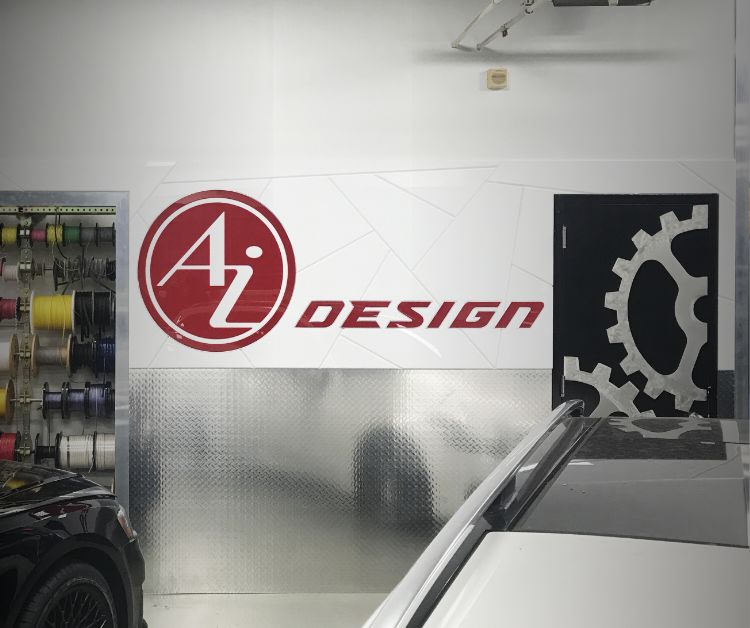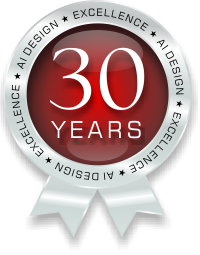Ai Design Blog
Porsche 959 restoration

What a blast to work on this infamous car! Some would arguably call it the first supercar, and/or the first hyper car, whatever the parlance be on the matter! While this was not the first Porsche 959 we've worked on (it was actually the fifth!), this project was by far the most involved and extensive.
And with this one, we were faced with a restoration. As restorations go, there is always a scale or a degree to which you restore. You can go ‘this’ far, or ‘that’ far…include this, but not that, etc. Some cars require more, some less. And, some things ought to be left alone ideally, but some not. There are simply many considerations and aspects to any restoration—particular to the automobile and the client—that it is usually best to define ahead of the work. And with that in mind, our task here was primarily, cosmetic and electrical, with some service actions.
right: The dissembled interior bits laid out
below: The interior showing the impact of the roller installation. There were also mounting plates installed on the floor.


above: After the interior was removed, it looked like anything but a rare multimillion dollar collectible.
below: The body and paint had some serious issues and defects that needed to be carefully corrected.

In basic terms, the work entailed the following specific points:
Full concours-level re-finish of the exterior, with great emphasis on care for the early composite materials, and sourcing OE seals, trim and bits, and restoring the car’s OEM ‘true’ color; a sympathetic dismantling of a significant racing roll-cage and related paraphernalia that had ‘attacked’ the interior; a dismantling of a large audio system, also in detriment to the OE interior and electrical system; a completely new and reupholstered interior with corrections to the above and emphasis on the true colors and materials; a serious correction and repair to the car’s body control electrical system and features, which were modified to degrees by the above but also by a Canepa conversion to the engine control system; to generally research and put back to OEM-stock all out-points (a departure from what is correct) to what should be standard, while keeping the Canepa conversion to the engine management in place; and generally, to make sure all body controls, cabin features such as knobs, ashtrays, HVAC, latches, lighting, restraints, seat features, etc., all worked flawlessly to spec. Pretty tall order!
below: Matt skillfully recovering the top piece of the center console

Challenges were many: Documentation was scant and hard to find. We chased chickens for the original service manual and key information from Canepa, for instance. But even with reference material, one had to look very deeply to uncover the actual OEM standard, cross referencing this with that, on and on. Part sourcing was literally an all-out effort comprised of both many sourcing points and many dead ends. Boy was it consuming! Paintwork was a very serious bit of choreography which we managed with the painter, being sure to not cut into the old composite’s resin cap, stripping all the old paint gingerly by sanding alone, and to painstakingly source all manner of seals and trims. Electrical was in bad shape and challenging to correct.
And then the interior. You really have to look at this in two parts: Part 1 was not upholstery - sewing and such - but it was correction and repair of so many things. Door panel cards had to be designed to spec and CNC’d, door linkages and trim bits all reset, restored, repaired, then pre-upholstery-fitted and perfect prior to any sewing. That was the drill for the dash area, center console, parcel shelf, etc. All of these had to be handled before any upholstery actually happened. And then Part 2, the actual upholstery. Here, many photos were used as reference. Leather sourcing, which had begun very early on, was difficult. The OEM leather had a pearl-like metallic sheen on a scale of grey tones, four in total. The true OEM leather could not be sourced or duplicated, but we were able to find a very fine process by which we could get the correct grey tones with a pearl effect that was just a perceivably tad less metallic than the OEM’s. And so many etc’s!
below: The completed interior, looking as good as new!






